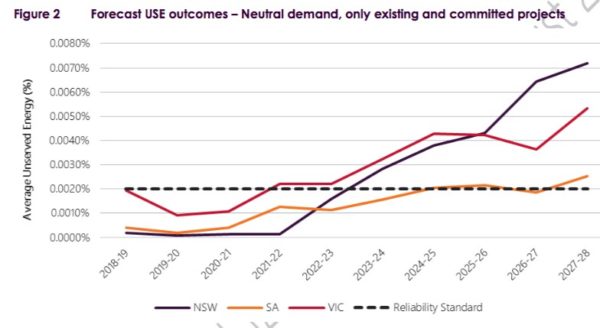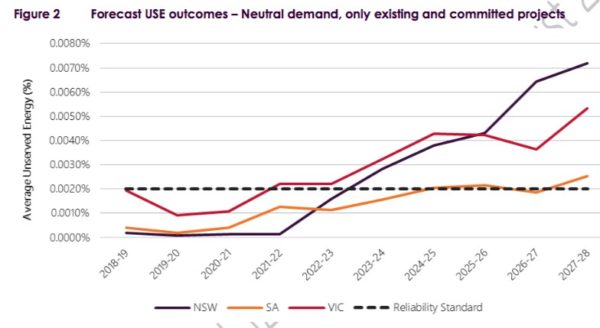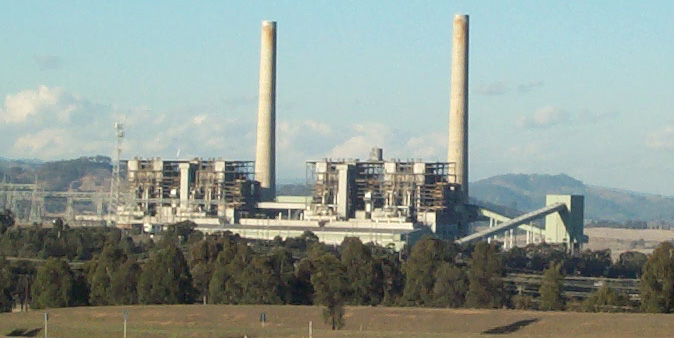The latest analysis from the Australian Energy Market Operator (AEMO) has pointed to a heightened risk of unserved energy (USE) over the next decade in the National Electricity Market (NEM), with a relatively high forecast likelihood of blackouts in Victoria this summer.
In its 2018 Electricity Statement of Opportunities (ESOO), AEMO says forecast risk of load shedding in 2018-19 has increased since last year, primarily because modelling has now factored in a reduction in thermal generation reliability observed in recent years.
AEMO underlines that without collaboration and long-term planning, there would be a risk of involuntary load shedding during summer peak periods in Victoria this summer (a one in three chance), in New South Wales from 2023-24 and in South Australia from 2024-25.
Therefore, AEMO is looking to procure off-market reserves and closely collaborate with industry and government. To address the most imminent threat in Victoria this summer, the market operator is seeking to contract additional reserves under the Reliability and Emergency Reserve Trader (RERT) mechanism, where major energy users reduce their consumption to ease pressure on the grid demand, in consultation with the state government.
But, as new renewable energy capacity comes online over the next few years, the risk of power outages is forecast to reduce through to 2020-21.
According to the AEMO modeling, there is over 5.6 GW of new generation and storage capacity, and upgrades to existing generation in store. With most of it committed since the 2017 ESOO, some 2.7 GW of utility-scale wind and solar generation was added in the past quarter alone, mainly in Victoria.
However, AEMO warns the current NEM reliability standard, which is set to ensure that sufficient supply resources exist to meet 99.998% of annual demand for electricity in each region, could be breached in NSW with the retirement of Liddell Power Station (1,800 MW, in 2022) and in SA with the closure of the Torrens Island A Power Station (480 MW, between 2019 and 2021).
Therefore, further investments will be needed to ensure reliability in the medium to longer term in accordance with AEMO`s landmark Integrated System Plan, which showed that the lowest-cost replacement option for retiring coal plants is a combination of solar (28 GW), wind (10.5 GW) and storage (17 GW and 90 GWh), complemented by 500 MW of flexible gas plant and transmission investment.
While AEMO is tracking nearly 50 MW of generation and storage projects in various stages of development, the core ESOO analysis includes only existing and new generation resources with a formal commitment to construct.

But, “to demonstrate how a portfolio of resources – including renewable generation, storage, flexible thermal generation, DER, and transmission – can meet these development needs, this ESOO also includes a reliability assessment if developments identified in the ISP are implemented. ”

This shows that the risk of breaching the reliability standard exists only if the ISP is not adopted, RERT is neglected, and further installation of large-scale renewables under state targets is thwarted.
The report also called for another energy policy to be considered “to ensure ongoing reliability and stability of the power system, such as contemplated by the reliability mechanism of the National Energy Guarantee, for the benefit of energy consumers”.
This content is protected by copyright and may not be reused. If you want to cooperate with us and would like to reuse some of our content, please contact: editors@pv-magazine.com.









4 comments
By submitting this form you agree to pv magazine using your data for the purposes of publishing your comment.
Your personal data will only be disclosed or otherwise transmitted to third parties for the purposes of spam filtering or if this is necessary for technical maintenance of the website. Any other transfer to third parties will not take place unless this is justified on the basis of applicable data protection regulations or if pv magazine is legally obliged to do so.
You may revoke this consent at any time with effect for the future, in which case your personal data will be deleted immediately. Otherwise, your data will be deleted if pv magazine has processed your request or the purpose of data storage is fulfilled.
Further information on data privacy can be found in our Data Protection Policy.